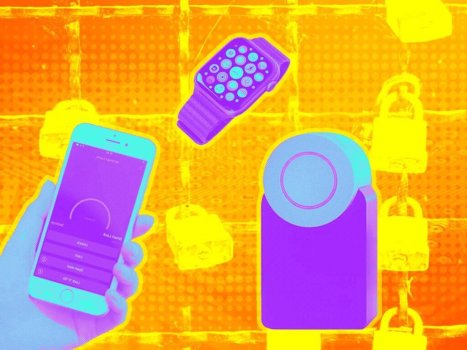K
Kathleen Martin
Guest
The Internet of Things (IoT) is shaping how we interact with the world every day. This connected future is powered by sensors and actuators connected via the cloud to applications that serve us in ways that we never could have imagined just a few years ago. Standards such as IEEE 802.15.4 and ultra-wideband (UWB) enable devices to communicate with each other without the need for line of sight, which means IoT can finally become a reality in places other than our homes and offices.
Why Has Ultra-Wideband Been a Buzzword Lately?
Ultra-wideband was first seen in mobile technology with the premiere of Apple’s iPhone 11 launched back in September 2019. Since then, the state of the art sensing technology has gained traction and presence in the tech world, especially in the past year or so. In response to the rave reviews Apple’s latest model was getting, Android and Google phones quickly followed suit, and proceeded to incorporate the same UWB technology you can now find in the Samsung Galaxy Note20 Ultra and in the upcoming Google Pixel 6 phone.
You might be asking yourself what makes this latest development so remarkable that it is in such high demand now, especially if UWB is not the first communication protocol to offer spatial awareness. It seems that tech geeks and the general audience are particularly interested in UWB because of how it enhances preceding technologies, such as wifi and Bluetooth, with an additional layer of accuracy. UWB has a high advantage in this field, as it can provide accuracy levels of 5-10 cm between two devices, while Bluetooth and wifi can only reach up to 5m.
How Ultra-Wideband Will Transform The IoT Industry
We cannot talk about UWB without acknowledging IoT. The concept of interconnected devices known as the Internet of Things continues to show promising advances, and now, with the reemergence of UWB technology, IoT devices requiring location and movement data will boast a stronger performance than ever before.
Thanks to UWB’s interoperability, this communication protocol can be harnessed to build upon smart technologies such as BlueTooth, wifi, and yes, the Internet of Things. UWB can play a significant role in revamping IoT devices already available while introducing even more sophisticated networks of interconnected devices to the public in the future.
UWB is quickly serving the needs of the numerous IoT applications in the market requiring precision location tracking and spatial awareness. According to Adarsh Krishnan, principal analyst at ABI Research, the incorporation of UWB in IoT applications improves accuracy even up to the millimeter level. ABI Research expects UWB to be present in over one-third of smartphones shipping out by 2025. UWB’s inherently strong security will significantly boost IoT protections as well, offering more protections for transactions that involve sensitive or private information.
Continue reading: https://www.iotforall.com/how-iot-and-ultra-wideband-go-hand-in-hand
Why Has Ultra-Wideband Been a Buzzword Lately?
Ultra-wideband was first seen in mobile technology with the premiere of Apple’s iPhone 11 launched back in September 2019. Since then, the state of the art sensing technology has gained traction and presence in the tech world, especially in the past year or so. In response to the rave reviews Apple’s latest model was getting, Android and Google phones quickly followed suit, and proceeded to incorporate the same UWB technology you can now find in the Samsung Galaxy Note20 Ultra and in the upcoming Google Pixel 6 phone.
You might be asking yourself what makes this latest development so remarkable that it is in such high demand now, especially if UWB is not the first communication protocol to offer spatial awareness. It seems that tech geeks and the general audience are particularly interested in UWB because of how it enhances preceding technologies, such as wifi and Bluetooth, with an additional layer of accuracy. UWB has a high advantage in this field, as it can provide accuracy levels of 5-10 cm between two devices, while Bluetooth and wifi can only reach up to 5m.
How Ultra-Wideband Will Transform The IoT Industry
We cannot talk about UWB without acknowledging IoT. The concept of interconnected devices known as the Internet of Things continues to show promising advances, and now, with the reemergence of UWB technology, IoT devices requiring location and movement data will boast a stronger performance than ever before.
Thanks to UWB’s interoperability, this communication protocol can be harnessed to build upon smart technologies such as BlueTooth, wifi, and yes, the Internet of Things. UWB can play a significant role in revamping IoT devices already available while introducing even more sophisticated networks of interconnected devices to the public in the future.
UWB is quickly serving the needs of the numerous IoT applications in the market requiring precision location tracking and spatial awareness. According to Adarsh Krishnan, principal analyst at ABI Research, the incorporation of UWB in IoT applications improves accuracy even up to the millimeter level. ABI Research expects UWB to be present in over one-third of smartphones shipping out by 2025. UWB’s inherently strong security will significantly boost IoT protections as well, offering more protections for transactions that involve sensitive or private information.
Continue reading: https://www.iotforall.com/how-iot-and-ultra-wideband-go-hand-in-hand

